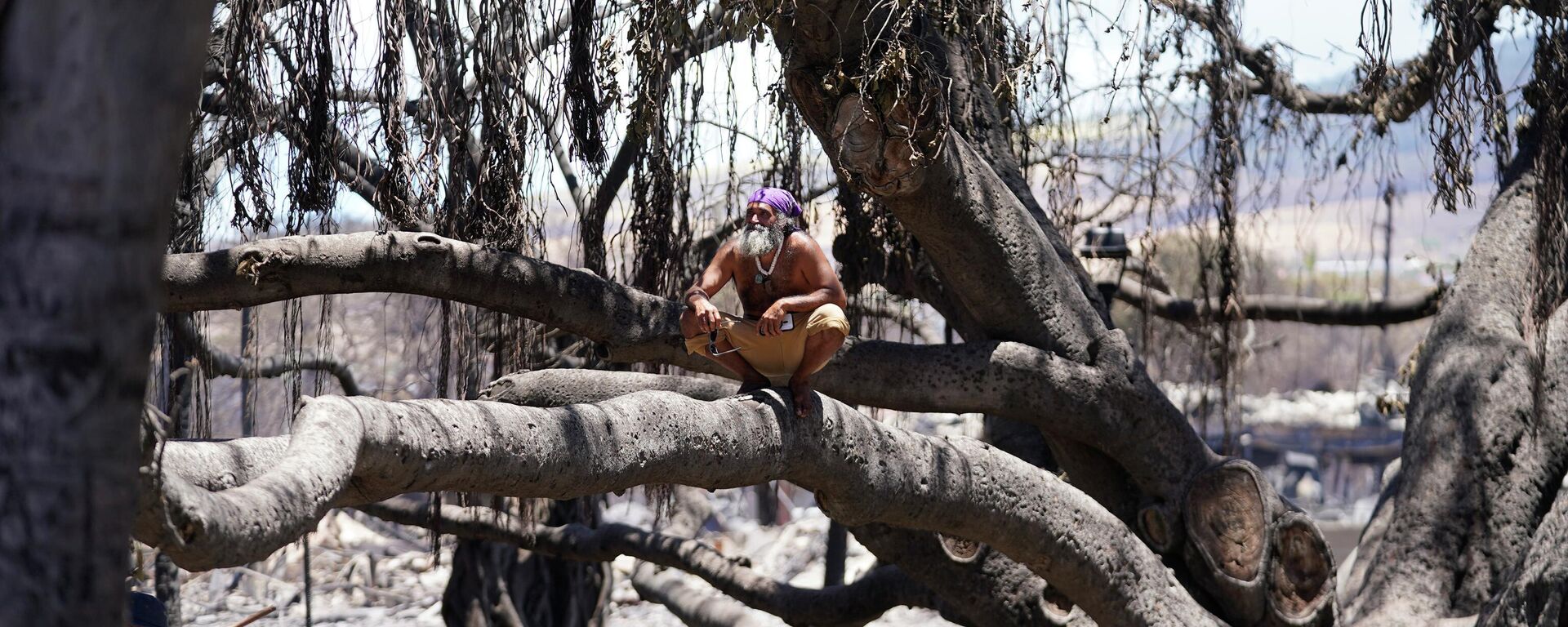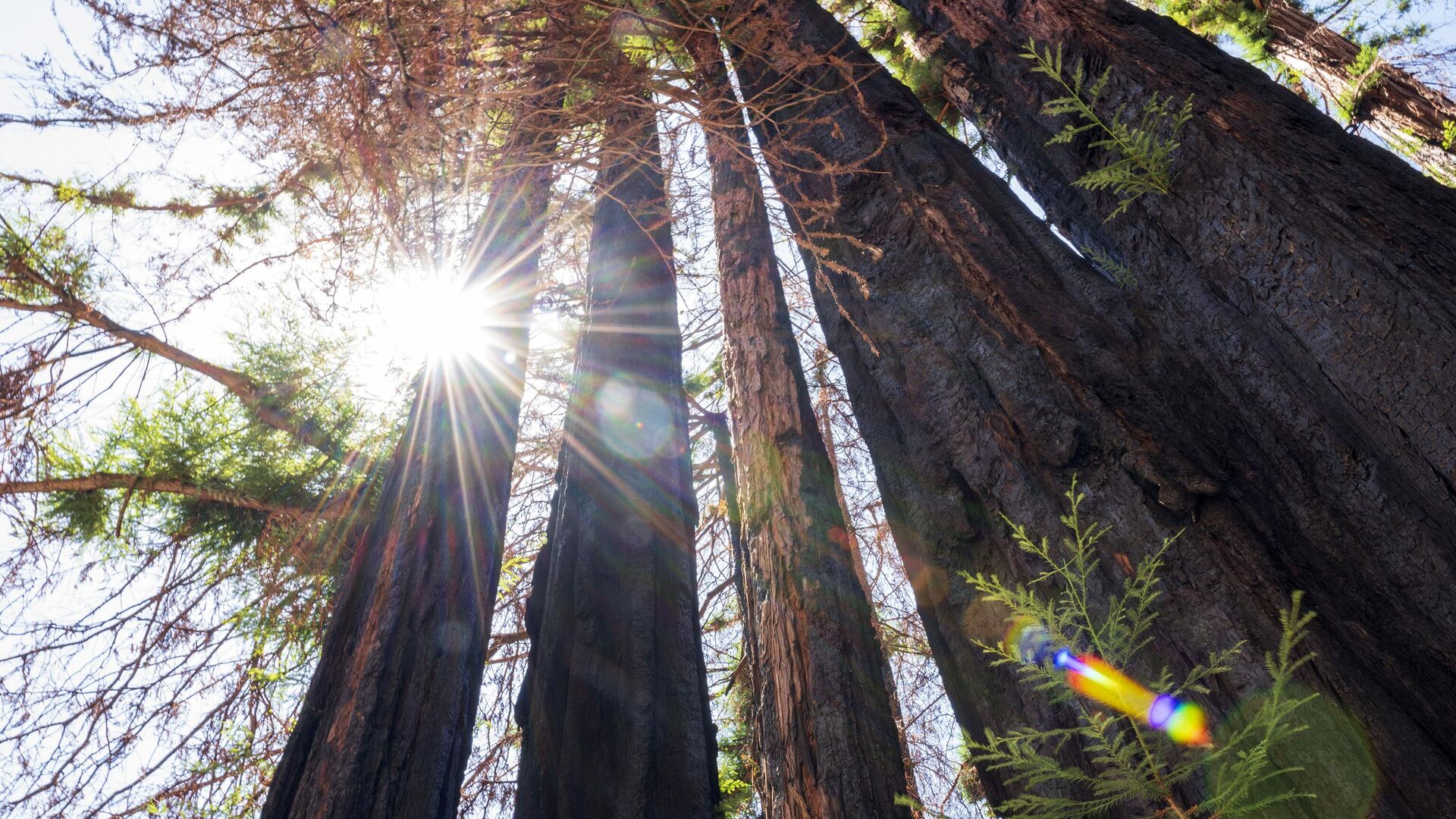https://sputnikglobe.com/20231205/redwood-trees-stun-scientists-by-sprouting-1000-year-old-buds-to-survive-after-wildfires-1115383641.html
Scientists Stunned as Redwood Trees Sprout 1,000-Year-Old Buds After Weathering Wildfires
Scientists Stunned as Redwood Trees Sprout 1,000-Year-Old Buds After Weathering Wildfires
Sputnik International
Ancient redwoods in California's Big Basin Redwoods State Park have astonished scientists by regenerating from 1000-year-old buds after a devastating wildfire in August 2020.
2023-12-05T00:17+0000
2023-12-05T00:17+0000
2023-12-06T09:19+0000
beyond politics
science & tech
california
wildfire
wildfires
redwood city
https://cdn1.img.sputnikglobe.com/img/07e7/0c/04/1115383479_0:0:3072:1728_1920x0_80_0_0_86ded48c8ac0b197ca6cfd8367d9d97e.jpg
Despite fears that most of the redwood trees would perish due to intense blazes, a recent study revealed that these towering giants tapped into energy reserves dating back decades, enabling them to sprout new growth and challenge existing understanding of tree survival.Tree ecophysiologist Drew Peltier and his team from Northern Arizona University discovered that, contrary to expectations, the surviving redwoods mobilized long-held energy reserves, using sugars produced from sunlight decades earlier. These reserves were channeled into buds that had been dormant for centuries beneath the bark.Adrian Rocha, an ecosystem ecologist at the University of Notre Dame, praised the findings, stating that they challenge previous knowledge on tree growth.While the study suggests redwoods possess tools to cope with catastrophic fires linked to climate change, uncertainties remain about their ability to withstand recurring infernos in a warmer climate.While redwoods typically resist fires due to their thick bark and elevated branches, the 2020 fire proved severe enough to burn even the uppermost branches, disrupting their photosynthesis.Radiocarbon dating revealed that the sugars sustaining the sprouts were, on average, 21 years old – the oldest energy reserves documented in trees. Peltier explained that the redwoods utilized carbohydrates photosynthesized nearly six decades ago, highlighting their fire resilience. Moreover, the sprouts emerged from buds that had formed centuries ago, with some extending back as much as 1,000 years, making them the oldest documented in scientific records.The study was published in Nature Plants journal.
https://sputnikglobe.com/20230921/life-finds-a-way-lahaina-banyan-tree-displays-new-leaves-after-devastating-wildfires-1113545701.html
california
redwood city
Sputnik International
feedback@sputniknews.com
+74956456601
MIA „Rossiya Segodnya“
2023
News
en_EN
Sputnik International
feedback@sputniknews.com
+74956456601
MIA „Rossiya Segodnya“
Sputnik International
feedback@sputniknews.com
+74956456601
MIA „Rossiya Segodnya“
2020 wildfire, california big basin redwoods state park, buds, wildfire in august 2020,
2020 wildfire, california big basin redwoods state park, buds, wildfire in august 2020,
Scientists Stunned as Redwood Trees Sprout 1,000-Year-Old Buds After Weathering Wildfires
00:17 GMT 05.12.2023 (Updated: 09:19 GMT 06.12.2023) The majestic redwoods, known for their resistance to wildfires, faced an unprecedented threat when flames tore through the canopies of these 100-meter-tall trees during the 2020 California wildfires.
Despite fears that most of the redwood trees would perish due to intense blazes, a recent study revealed that these towering giants tapped into energy reserves dating back decades, enabling them to sprout new growth and challenge existing understanding of tree survival.
Tree ecophysiologist Drew Peltier and his team from Northern Arizona University discovered that, contrary to expectations, the surviving redwoods mobilized long-held energy reserves, using sugars produced from sunlight decades earlier. These reserves were channeled into buds that had been dormant for centuries beneath the bark.
Adrian Rocha, an ecosystem ecologist at the University of Notre Dame, praised the findings, stating that they challenge previous knowledge on tree growth.
"It is amazing to learn that carbon taken up decades ago can be used to sustain its growth into the future," stated Rocha.
While the study suggests redwoods possess tools to cope with catastrophic fires linked to climate change, uncertainties remain about their ability to withstand recurring infernos in a warmer climate.
While redwoods typically resist fires due to their thick bark and elevated branches, the 2020 fire proved severe enough to burn even the uppermost branches, disrupting their photosynthesis.

21 September 2023, 00:38 GMT
Radiocarbon dating revealed that the sugars sustaining the sprouts were, on average, 21 years old – the oldest energy reserves documented in trees. Peltier explained that the redwoods utilized carbohydrates photosynthesized nearly six decades ago, highlighting their fire resilience.
Moreover, the sprouts emerged from buds that had formed centuries ago, with some extending back as much as 1,000 years, making them the oldest documented in scientific records.
While the redwoods have shown remarkable recovery, questions linger about their ability to cope with reduced energy from photosynthesis in the coming years. The concern is heightened by the potential threat of a second catastrophic fire and whether the ancient trees have depleted their emergency reserves.
The study was published in
Nature Plants journal.



